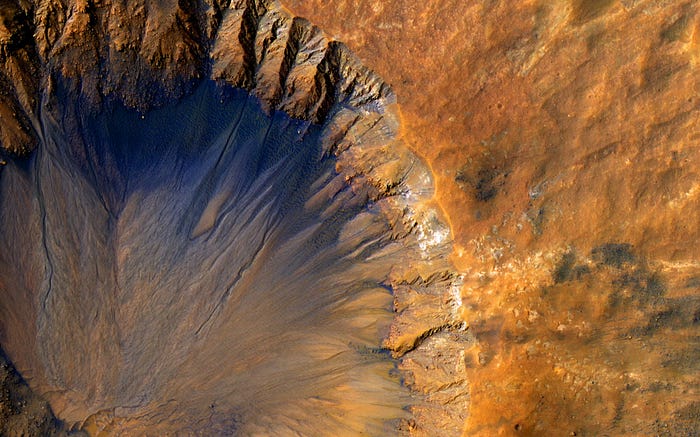It’s How NASA’s AI Works to Discover Craters

There’s still a lot we don’t know about Mars, but thanks to technology, we’re getting a better idea of what’s on the planet. This is due, in part, to the use of AI to help classify craters that have been found on the red planet.
NASA researchers might not have even noticed a cluster of creators that seem to have been formed on Mars within the last decade if it was not for AI’s help. Thanks to NASA’s machine learning tool, named MRO (Mars Reconnaissance Orbiter), researchers can save a ton of time looking at images for signs of a crater.
MRO detected a group of relatively small craters measuring just 13 feet in diameter. These craters seem to have come from a meteor that slammed into the Martian surface sometime between 2010 and 2012.
How NASA’s AI Works to Discover Craters
Using AI to find craters is not an easy one. The orbiter has been used for the last 14 years to help researchers learn more about the surface of Mars. In those 14 years, scientists have used data from MRO to locate over 1,000 new craters.
The spacecraft orbits around Mars, taking low-resolution images of the planet’s surface, covering hundreds of miles at a time. These images only transmit part of the story. Scientists cannot see the entire crater. Instead, they can recognize blast marks that show a crater on the surface.
Once the blast marks have been identified, scientists use a high-resolution camera to get a closer look. Their instrument is called the HiRISE (High-Resolution Imaging Science Experiment), and it delivers some of the most high-res images you can imagine.
This isn’t an exaggeration. The images sent back by the HiRISE are so clear that you can clearly see the tracks left in the Martian dust by the Mars Rover. If you want to see images from the HiRISE for yourself, all you need to do is request pictures from the HiWish page. Once you make a free account, you can also make suggestions about what the HiRISE should photograph next.
Training a Crater Classifier
The process of examining images from MRO isn’t quick for scientists. It usually takes around 40 minutes for a researcher to scan just one image from the Context Camera to see if there’s any evidence of a crater. Knowing they needed a way to save time, researchers created a tool to develop new technologies for future Mars orbiters.
The crater classifier was trained by being fed 6,830 images from the Context Camera. These images included locations that the HiRISE had already confirmed. It was also provided pictures of parts of the planet that didn’t have any impact marks so that the classifier could learn what not to look for.
After being trained, the classifier can do what it takes a researcher 40 minutes to do in five seconds — examine an image to determine if there are signs of a crater.
Conclusion
By working alongside human scientists, the classifier can speed up identifying craters on the surface of Mars. This gives scientists more time to focus on other things, like figuring out how often meteors strike the planet.
The crater classifier is just one more example of how AI can improve processes and handle tasks to free humans up to use their skills and expertise in more meaningful ways.